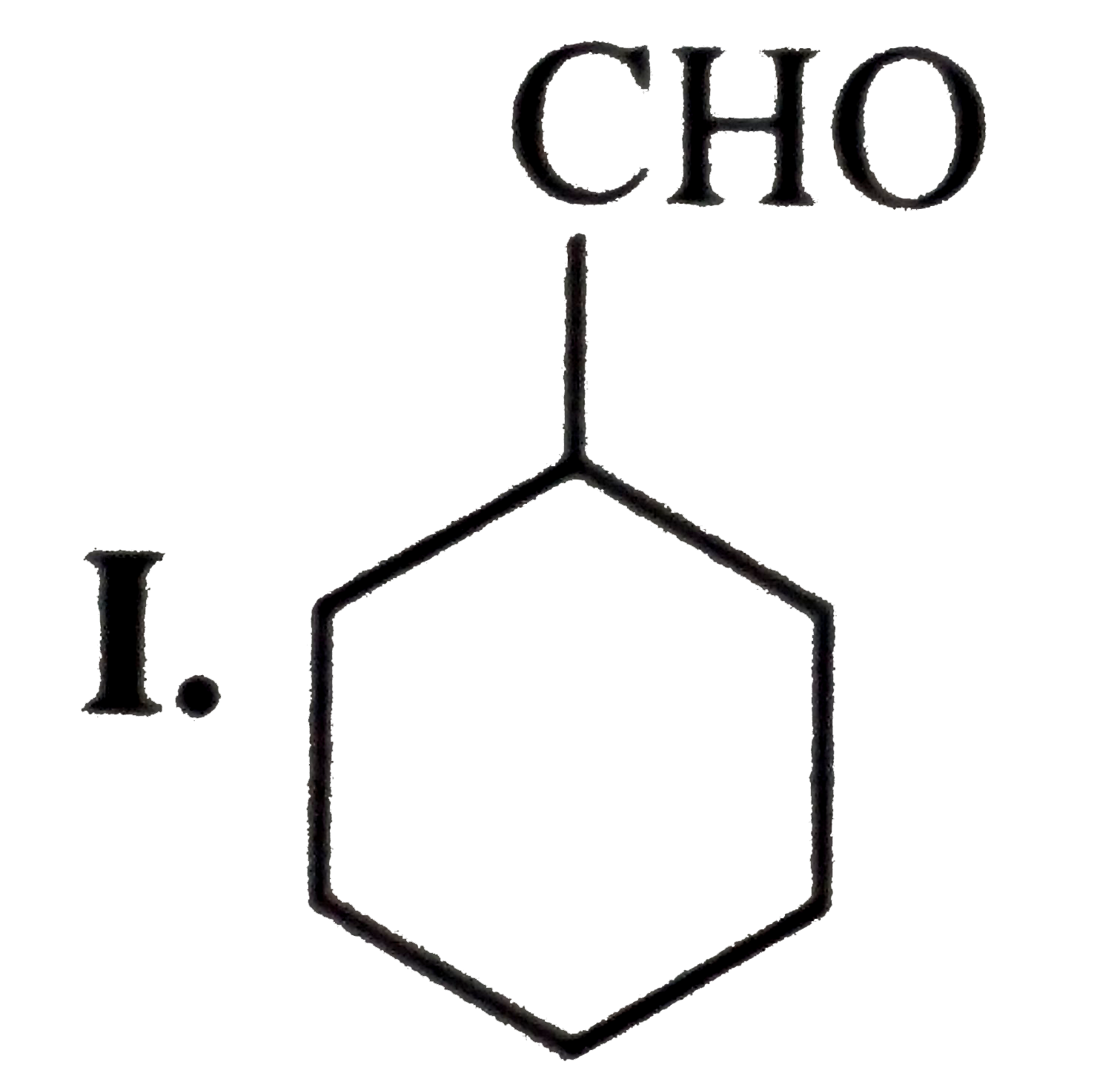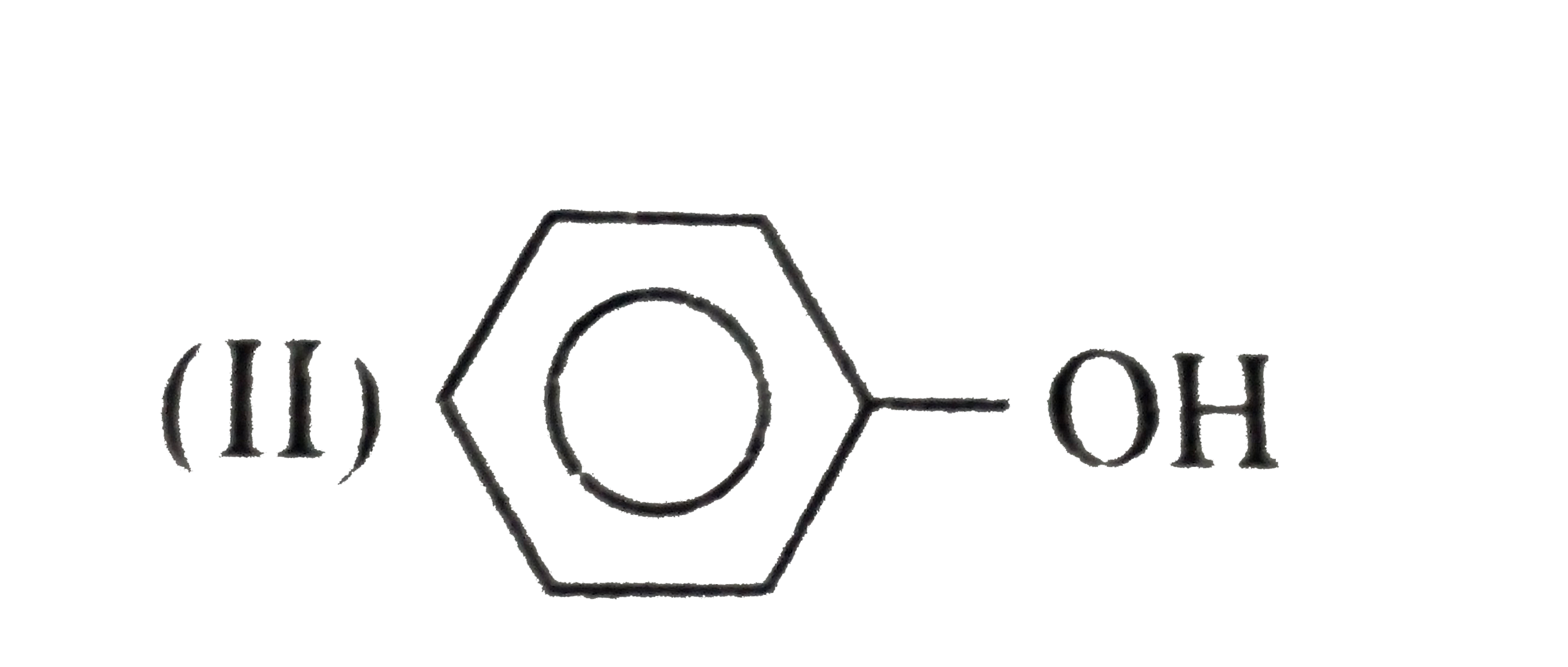Give the decreasing order of boiling points of the following:
(a).(I) Butanal
(II) Butane-1-ol
(III)Diethyl ether
(IV) Pentane
(b) (I) Propan−2-ol
(II) Propan−2-one
(III) 2−Methyl propene
To determine the decreasing order of boiling points for the given compounds in parts (a) and (b), we need to analyze the types of intermolecular forces present in each compound. The boiling point of a substance is influenced by the strength of these forces, which include hydrogen bonding, dipole-dipole interactions, and London dispersion forces.
Part (a)
1. Identify the compounds:
- (I) Butanal
- (II) Butane-1-ol
- (III) Diethyl ether
- (IV) Pentane
2. Analyze the intermolecular forces:
- Butane-1-ol: This is an alcohol and can form hydrogen bonds due to the presence of an -OH group. Hydrogen bonding is the strongest type of intermolecular force.
- Butanal: This is an aldehyde and has dipole-dipole interactions due to the polar carbonyl group (C=O), but it cannot form hydrogen bonds like alcohols.
- Diethyl ether: This compound has dipole-dipole interactions but is less polar than butanal and cannot form hydrogen bonds, making its boiling point lower than that of butanol.
- Pentane: This is an alkane and has only weak London dispersion forces, which are the weakest type of intermolecular force.
3. Order the compounds based on boiling points:
- Butane-1-ol (highest boiling point due to hydrogen bonding)
- Butanal (next highest due to dipole-dipole interactions)
- Diethyl ether (lower than butanal due to weaker dipole-dipole interactions)
- Pentane (lowest boiling point due to weak London dispersion forces)
Decreasing order of boiling points for part (a):
(II) Butane-1-ol > (I) Butanal > (III) Diethyl ether > (IV) Pentane
Part (b)
1. Identify the compounds:
- (I) Propan-2-ol
- (II) Propan-2-one
- (III) 2-Methyl propene
2. Analyze the intermolecular forces:
- Propan-2-ol: This is an alcohol and can form hydrogen bonds, which gives it a high boiling point.
- Propan-2-one: This is a ketone and has dipole-dipole interactions due to the carbonyl group, but it cannot form hydrogen bonds like alcohols.
- 2-Methyl propene: This is an alkene and has only weak London dispersion forces, making its boiling point the lowest among the three.
3. Order the compounds based on boiling points:
- Propan-2-ol (highest boiling point due to hydrogen bonding)
- Propan-2-one (next highest due to dipole-dipole interactions)
- 2-Methyl propene (lowest boiling point due to weak London dispersion forces)
Decreasing order of boiling points for part (b):
(I) Propan-2-ol > (II) Propan-2-one > (III) 2-Methyl propene
Summary of Answers:
- (a) (II) Butane-1-ol > (I) Butanal > (III) Diethyl ether > (IV) Pentane
- (b) (I) Propan-2-ol > (II) Propan-2-one > (III) 2-Methyl propene
- (I) Butanal
- (II) Butane-1-ol
- (III) Diethyl ether
- (IV) Pentane
- Butane-1-ol: This is an alcohol and can form hydrogen bonds due to the presence of an -OH group. Hydrogen bonding is the strongest type of intermolecular force.
- Butanal: This is an aldehyde and has dipole-dipole interactions due to the polar carbonyl group (C=O), but it cannot form hydrogen bonds like alcohols.
- Diethyl ether: This compound has dipole-dipole interactions but is less polar than butanal and cannot form hydrogen bonds, making its boiling point lower than that of butanol.
- Pentane: This is an alkane and has only weak London dispersion forces, which are the weakest type of intermolecular force.
- Butane-1-ol (highest boiling point due to hydrogen bonding)
- Butanal (next highest due to dipole-dipole interactions)
- Diethyl ether (lower than butanal due to weaker dipole-dipole interactions)
- Pentane (lowest boiling point due to weak London dispersion forces)
(II) Butane-1-ol > (I) Butanal > (III) Diethyl ether > (IV) Pentane
- (I) Propan-2-ol
- (II) Propan-2-one
- (III) 2-Methyl propene
- Propan-2-ol: This is an alcohol and can form hydrogen bonds, which gives it a high boiling point.
- Propan-2-one: This is a ketone and has dipole-dipole interactions due to the carbonyl group, but it cannot form hydrogen bonds like alcohols.
- 2-Methyl propene: This is an alkene and has only weak London dispersion forces, making its boiling point the lowest among the three.
- Propan-2-ol (highest boiling point due to hydrogen bonding)
- Propan-2-one (next highest due to dipole-dipole interactions)
- 2-Methyl propene (lowest boiling point due to weak London dispersion forces)
(I) Propan-2-ol > (II) Propan-2-one > (III) 2-Methyl propene
- (a) (II) Butane-1-ol > (I) Butanal > (III) Diethyl ether > (IV) Pentane
- (b) (I) Propan-2-ol > (II) Propan-2-one > (III) 2-Methyl propene
Topper's Solved these Questions
- ALIPHATIC AND AROMATIC ALDEHYDES AND KETONESBOOK - CENGAGE CHEMISTRY ENGLISHCHAPTER - ALIPHATIC AND AROMATIC ALDEHYDES AND KETONESEXERCISE - Solved Examples
13 Videos
- ALIPHATIC AND AROMATIC ALDEHYDES AND KETONESBOOK - CENGAGE CHEMISTRY ENGLISHCHAPTER - ALIPHATIC AND AROMATIC ALDEHYDES AND KETONESEXERCISE - Exercises Subjective
52 Videos
- ALCOHOL,PHENOL AND ETHERSBOOK - CENGAGE CHEMISTRY ENGLISHCHAPTER - ALCOHOL,PHENOL AND ETHERSEXERCISE - Archives Analytical And Descriptive
15 Videos
- APPENDIX INORGANIC VOLUME 2BOOK - CENGAGE CHEMISTRY ENGLISHCHAPTER - APPENDIX INORGANIC VOLUME 2EXERCISE - Short Answer Type
179 Videos
Similar Questions
Knowledge Check
Arrange the following in decreasing order of their boiling points:
(I) n-Butane
(II) 2-Methylbutane,
(III) n-Pentane
(IV) 2,2-DimethylpropaneAIgtIIgtIIIgtIVBIIgtIIIgtIVgtICIVgtIIIgtIIgtIDIIIgtIIgtIVgtI
Give the decreasing order of hydrate formation of the following.
I. HCHO II. PhCHO
III. Chloral IV. Acetone
View SolutionGive decreasing order of the following towards NA reaction.
I. II.
II. 
III. IV.
IV. 
View SolutionBoling point order :
(I) Methanol
(II) Ethanol
(III) propan-1-ol
(iv) Butan -1-ol
View SolutionDraw the structures of each of the followings.
(a)Butan-1-ol , (b)Butane-2-thiol , ( c)Pentan-2-amine , (d)Pentane-2-one ,
(e)3-Chloropentan-1-ol , (f)Hexan-2,4-dione
View SolutionGive the structural formulae of each of the following:
(i) 2-methyl propane
(ii) Ethanoic acid
(iii) Butan-2-ol
View SolutionArrange the following in decreasing order of their boiling points.
(A). N-butane
(B). 2-methylbutane
(C). N-pentane
(D). 2,2-dimethylpropane
View SolutionArrange the following compounds in the decreasing of their boiling points and solubilitiy in H2O.
(I) Methanol (II) Ethanol (III) Propan-1-ol (IV) Butan-1-oI (V) Butan-2-oI (VI) Pentane-1-oI
View Solution

 (II)
(II) 
 (IV)
(IV) 